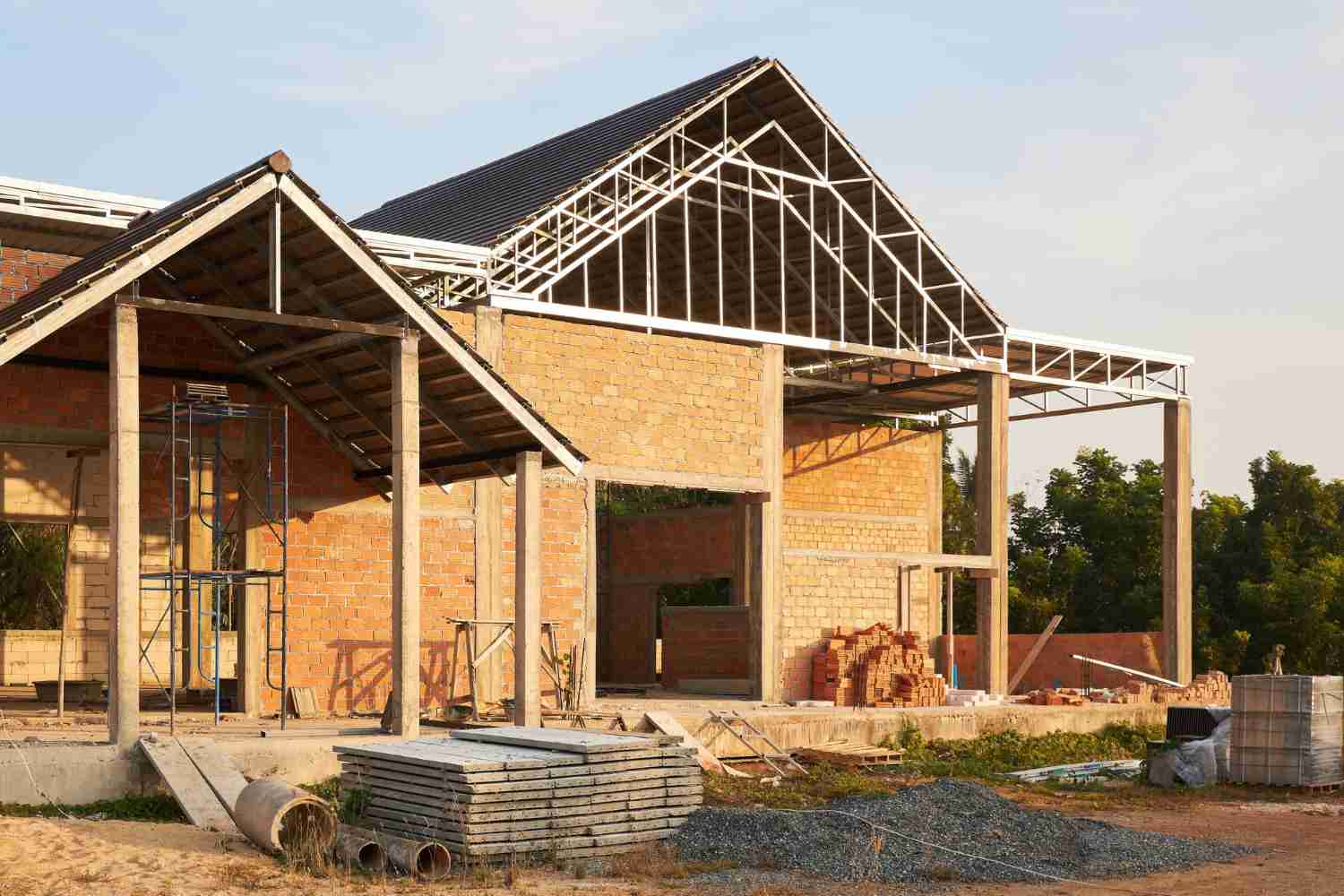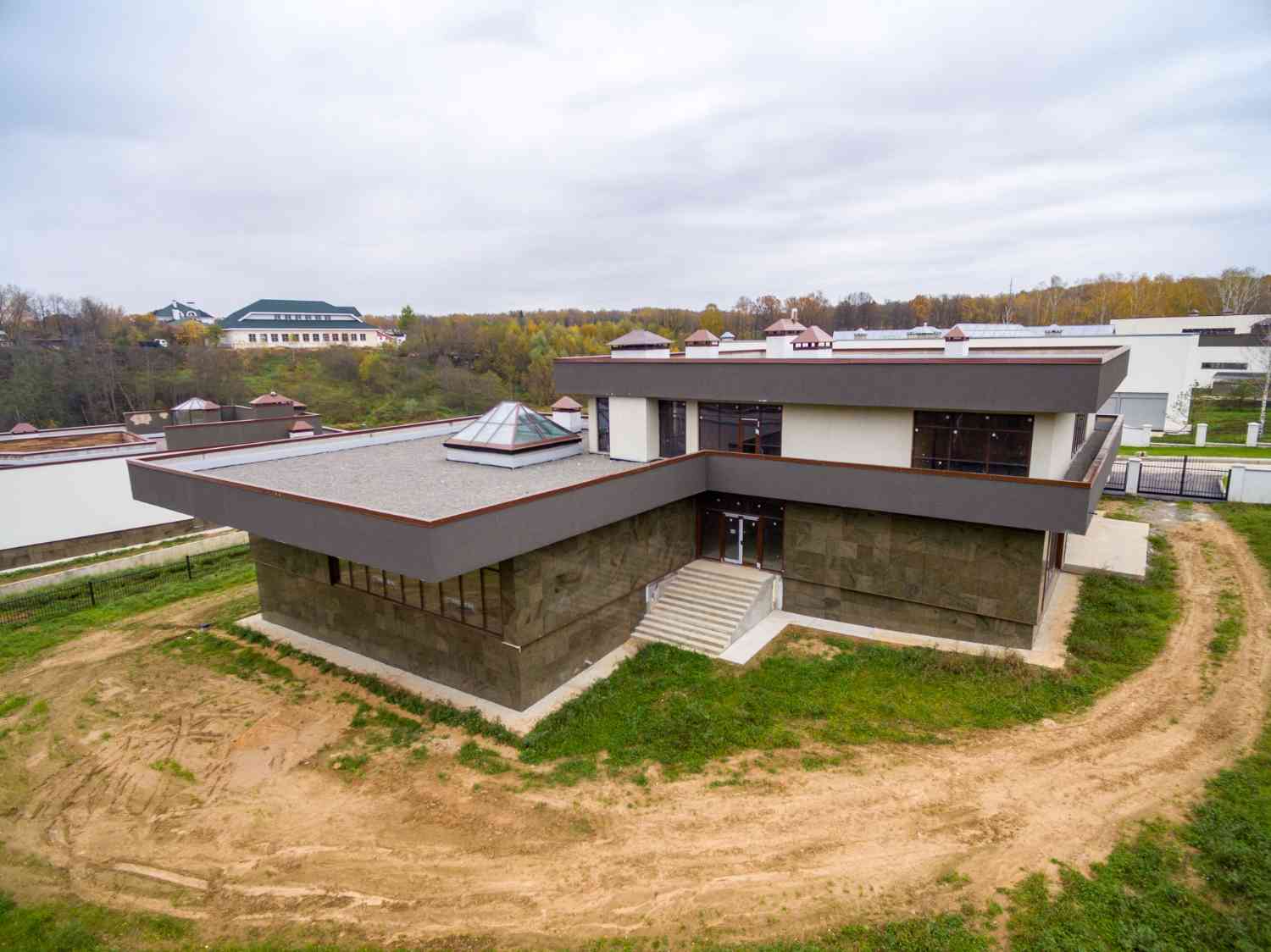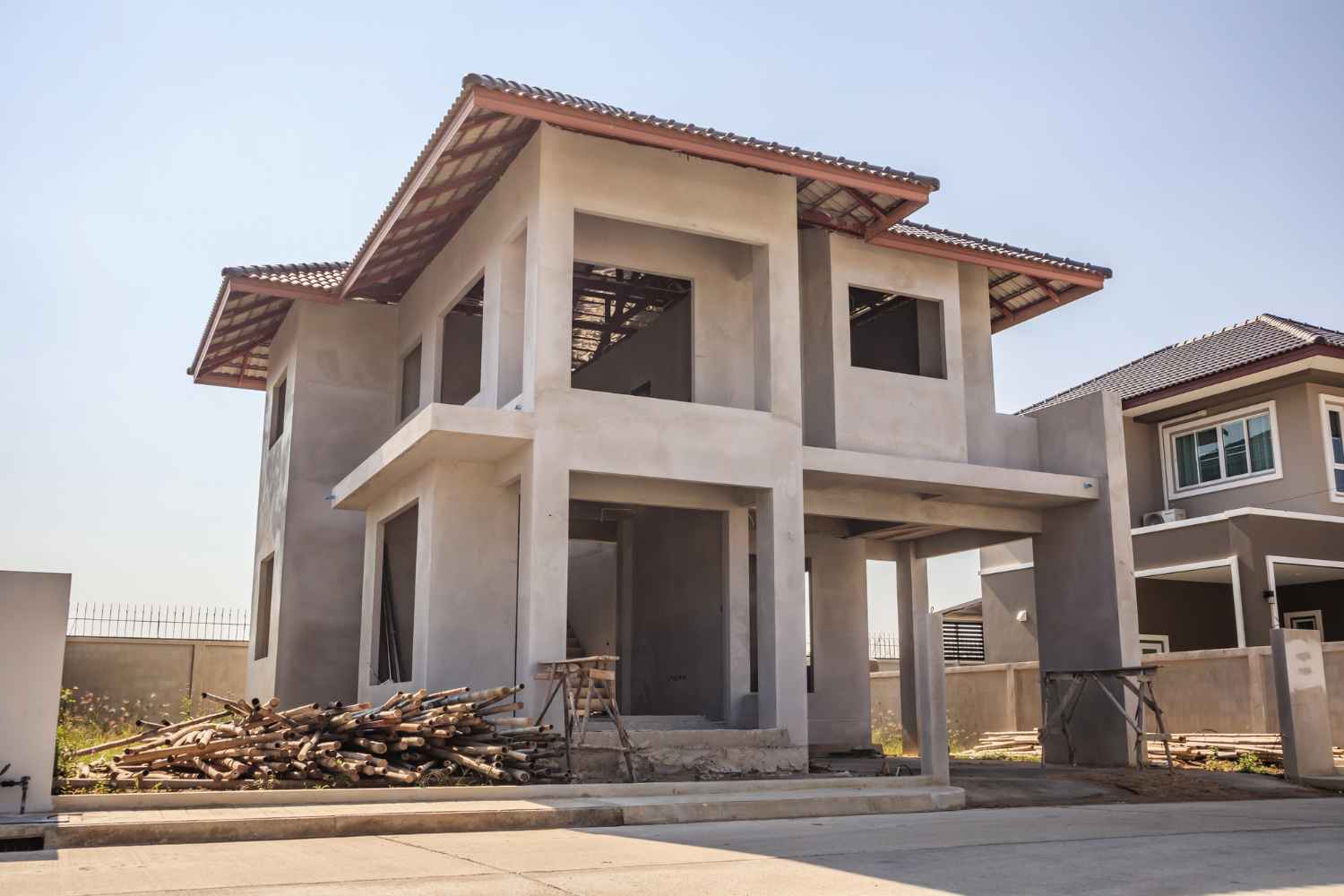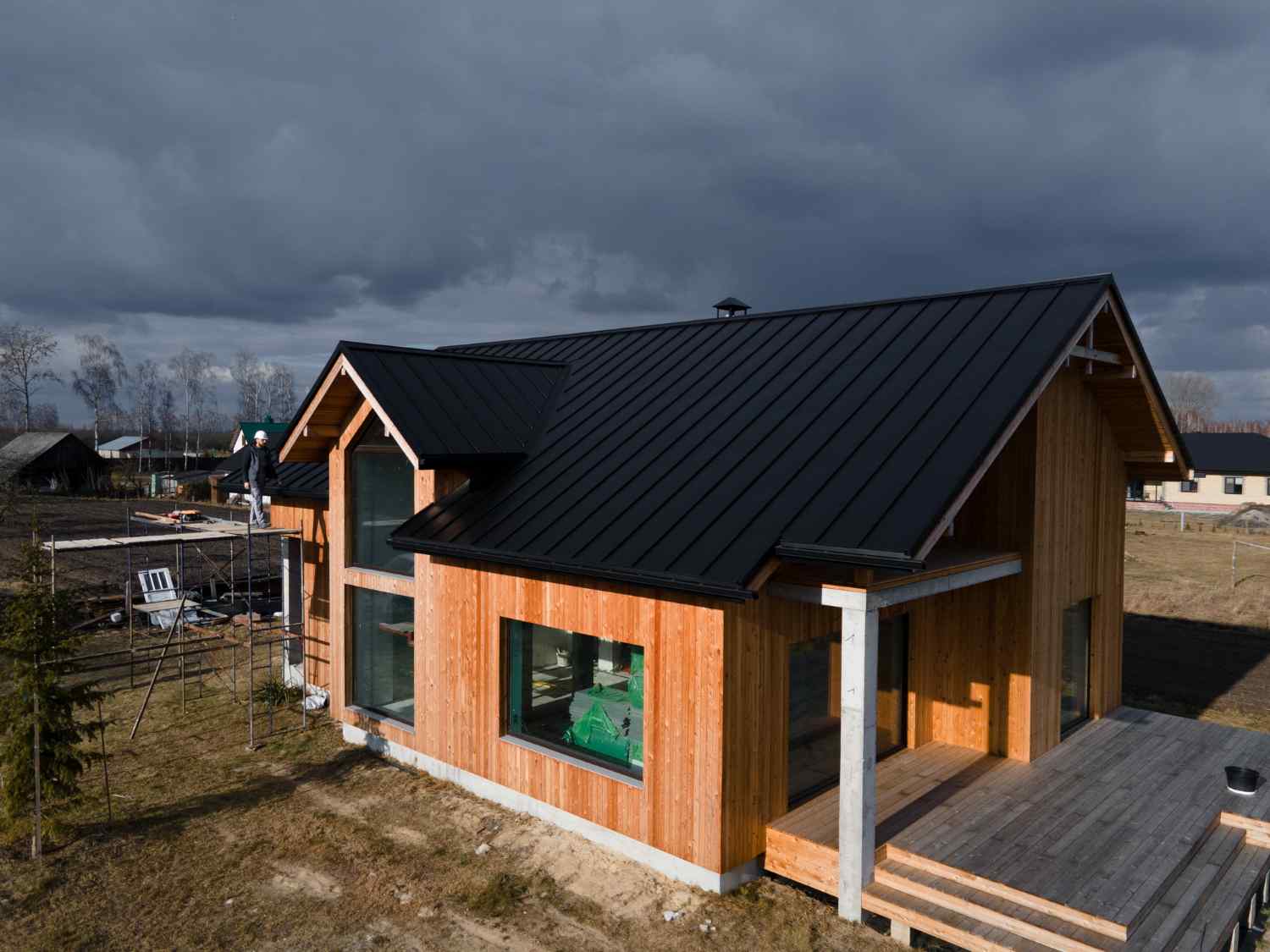Building an extension in the UK holds immense significance, opening a realm of possibilities for homeowners. With each brick laid and every beam carefully placed, you unlock the key to unlocking new ways of comfort, style and elegance.
Picture the joy of expanding your living space, adding an extra bedroom, or creating a personal oasis for work or play. An extension brings practicality and comfort and brings new life into your property’s value, increasing its allure in the eyes of potential buyers.
By avoiding the hassle and costs of moving, you can fully indulge in customisation, shaping your property to represent your taste. Building an extension in the UK is the brushstroke that adds depth, space, and endless possibilities in the vast tapestry of homeownership.
Significance of Rules for Extension Building
Rules for building an extension in the UK are in place to ensure safety, uphold aesthetic standards, and maintain the integrity of the local environment. These regulations serve to protect both homeowners and the community at large.
They cover aspects such as structural stability, fire safety, energy efficiency, drainage, and preserving the local character and landscape. By having rules and building regulations in place, the UK aims to promote responsible construction practices, minimise the risk of accidents or damage, and maintain a cohesive and harmonious built environment.
Compliance with these rules helps ensure that extensions are constructed to high standards, benefiting homeowners, neighbours, and the overall quality of the built environment.


Permitted Development Rules for Extensions
Here are the rules for building single-storey, double-storey, front, rear, and side extensions in the UK:
Single-Storey Extensions
Maximum Height: The maximum height of a single-storey rear extension should not exceed 4 meters.
Maximum Depth: For an attached single-storey rear extension, the maximum depth should be 3 meters for a semi-detached house and 4 meters for a detached house. However, these limits can be extended to 6 and 8 meters, respectively, subject to certain conditions and neighbour consultation.
Boundary Rules: Single-storey rear extensions can be built up to 3 meters beyond the rear wall of your attached house. For a detached house, this height can be up to 4 meters.
Materials and Design: The design and materials used for the extension should be in harmony with the existing house and the surrounding area.
Double-Storey Extensions
Permitted Development Rights: Double-storey extensions are subject to stricter rules and require full planning permission. It is advisable to consult with your local planning authority for specific requirements and limitations.
Height and Size: The height, size, and design of double-storey extensions will be carefully considered by the planning authority to ensure they align with the area’s character and do not cause a significant impact or loss of amenities to neighbours.
Front, Rear, and Side Extensions
Front Extensions: In most cases, front extensions require full planning permission. Local planning authorities will assess the impact on the street scene, the area’s character, and the house’s visual appearance.
Rear Extensions: The rules for rear extensions, whether single-storey or double-storey, are covered under the earlier guidelines.
Side Extensions: Side extensions are subject to various restrictions, including height, width, and proximity to boundaries. It is crucial to consult the local planning to affirm whether you need planning permission.
It’s important to note that planning rules and regulations can vary depending on the location, property type, and local authority guidelines. It is recommended to consult with professionals, such as architects or planning consultants, and check the latest permitted development rights and planning policies specific to your area before undertaking any extension project.
However, with the amendments in planning permission rules, there are certain exceptions when building your house extensions without planning. Let’s look in detail at some conditions and rules for building extensions.
Primary Conditions for Extensions with No Planning
In the mysterious realm of home extensions, three conditions hold the key to unlocking a world without the burdensome chains of planning permission.
Time Traveller’s Dilemma:
If you or any previous homeowners have extended your house since 1948, the mystical realm of planning permission must be ventured into for your new extension to see the light of day.
Land of Designated Area:
Beware, homes residing within the sacred boundaries of listed properties or “designated land” (conservation areas, areas of outstanding natural beauty) face unique challenges. Permitted development rights may be limited or entirely revoked, requiring the guidance of expert sorcerers to navigate the path of extension.
House vs. the Rest:
Only houses hold the enchanted keys to permitted development, while other beings like flats and maisonettes must seek full planning permission to unlock their expansion dreams. Beware, for even previously transformed dwellings may find their rights in question, requiring a closer look into the realm of permission.
Unveiling the Boundless Expansion
Below are some conditions where you can build an extension without planning permission.
Attached Property Marvels: Where Walls and Dreams Unite
Stretching Limits: In the enchanted realm of attached property extensions, the boundary of possibilities is set by the rear wall of the original home. Fear not, for you may extend your dwelling by a maximum of 3 meters, crafting a seamless blend of old and new.
Taming the Heights: As your dreams ascend, remember that the roof and ridges of the extension must not surpass the height of the original house. Let your aspirations rise, but keep the eaves within 2 meters of the boundary, preserving the delicate balance between openness and privacy.
Detached Property Wonders: Unleashing Freedom, One Meter at a Time
The Art of Liberation: Detached property extensions open gates to even grander horizons. With the rear wall as your guide, your extension may rise up to 4 meters, weaving a tapestry of boundless possibilities.
Reaching for the Sky, but with Grace: As you soar higher, remember that the heights must still pay homage to the original house. Let your ambitions take flight while the eaves maintain a modest 2-meter distance from the boundary, gracefully embracing the symphony of space and tranquillity.
Single-Storey Charms: Conservatories and Orangeries Unveiled
Scaling the Heights: Within single-storey extensions, the height dances within the confines of 4 meters. Let your ambitions ascend, embracing the freedom to shape a sanctuary that breathes with newfound space and light.
The Art of Balance: Widths and Proportions: As you expand the realm of your dwelling, remember that the width of a single-storey extension must not exceed half the size of the original house. Find equilibrium within these dimensions, unlocking a seamless union of functionality and aesthetics.
Side and Front Pioneers: Navigating the Path Less Travelled
The Dance of Proximity: Extensions that embrace the side or front of a house embark on an extraordinary journey. They must stand closer to the property than the enchanted pathways of public highways, ensuring a delicate balance between architectural exploration and respect for the external realm.


Advantages of Building Without Planning
Extending your property without planning permission in the UK can bring several significant benefits. Here are the key advantages:
Time and Cost Savings:
By utilising permitted development rights, you can save a considerable amount of time and money. Without planning permission, you can proceed with your extension project more quickly and efficiently, avoiding delays and associated expenses.
Streamlined Process:
Extending without planning permission simplifies the construction process. You can focus on the design and execution of your project without the additional bureaucratic steps and potential uncertainties involved in obtaining planning approval. This streamlined process allows you to bring your vision to life more easily.
Design Flexibility:
Permitted development guidelines offer a certain level of flexibility in terms of the design and size of your extension. You can explore creative options and tailor your extension to suit your specific needs and preferences. This flexibility can result in a more personalised and functional living space.
Avoiding Restrictions:
In some cases, seeking planning permission may come with certain restrictions or conditions imposed by local authorities. By extending without planning permission, you can avoid potential limitations and have more control over the design and features of your extension.
Faster Response Time:
Your local planning authority typically determines the decision on whether your extension falls within permitted development rights. Compared to the planning permission process, the response time from the authority for permitted development queries is usually faster.
It is important to note that while extending without planning permission offers these benefits, certain limitations and conditions must be adhered to. It is advisable to consult with professionals and refer to the latest permitted development guidelines to ensure compliance and a successful extension project.
Engaging Guidelines for Other Projects
Apart from these, there are other rules that one must know regarding other areas of your property. Let’s give an overview.
Basement Conversions: Unveiling Subterranean Secrets
Sublime Transformations: Convert your basement without permission as long as it remains a part of your existing dwelling, doesn’t involve new excavation, maintains the current usage, and gracefully preserves the external appearance.
Shedding Light on Lightwells: When adding a lightwell, ensure it doesn’t alter the external aesthetic, allowing your basement conversion to seamlessly blend with the surroundings.
Window Replacements: Refreshing Perspectives, No Permission Required
Revitalise with Freedom: Exchange your windows with similar ones, breathing new life into your home’s façade without planning permission.
Internal Wall Knockdowns: Embrace the Open Space, No Constraints
Liberating Transformations: Experience the freedom of knocking down internal walls, letting your home breathe and flow, as long as you’re not in a listed building or conservation area.
Rooflights: Illuminating the Skies with Permission-Free Brilliance
Brighten Up with Ease: Rooflight installation becomes a breeze without planning permission as long as they stay within 15cm of the roof’s slope, avoid forward projection on highway-facing elevations, and your property isn’t in a conservation area or outstanding natural beauty zone.
Loft Conversions: Ascend to New Heights with Ease
Masterful Cubic Content: Let your loft conversion shine within the 40m3 cubic content limit, ensuring a harmonious blend with the existing roof’s highest point and principal elevation.
Garage Conversions: Unleash the Potential of Your Space
Internal Evolution: Most garage conversions fall under permitted development, allowing internal renovations without enlargement. Double-check with local authorities for detached garage exceptions or depleted permitted development allocations.
Conservatory Extensions: Where Nature and Living Unite
A Perfect Harmony: Conservatory extensions follow the same permitted development criteria as house extensions, never surpassing the height of the main house and occupying no more than half of the surrounding land.
Shed/Garden Room Extensions: Embrace the Outdoor Retreat
The Garden Haven: Shed and garden room extensions become a reality under permitted development, staying behind the principal elevation, maintaining a single-storey structure with a maximum eaves height of 2.5m, and refraining from residential usage.
Fences and Walls: Defining Boundaries, Without Permission
Constructing Boundaries: Erect your fences and walls without seeking permission, keeping the height within 1m adjacent to a highway and 2m for other areas, as long as your property isn’t listed.
Swimming Pools: Dive into Exquisite Permitted Development
Poolside Dreams: Permitted development allows for swimming pool construction, occupying no more than half of your garden curtilage, where leisure and relaxation harmonise.
Solar Panels: Benefitting from the Power of the Sun
Green Energy Unleashed: Add solar panels with ease, ensuring they don’t protrude more than 200mm past the roof or wall plane, with the highest point below the roof’s peak, embracing sustainable brilliance.
Unleash your imagination and create the home of your dreams, where permitted development opens the door to endless possibilities.

